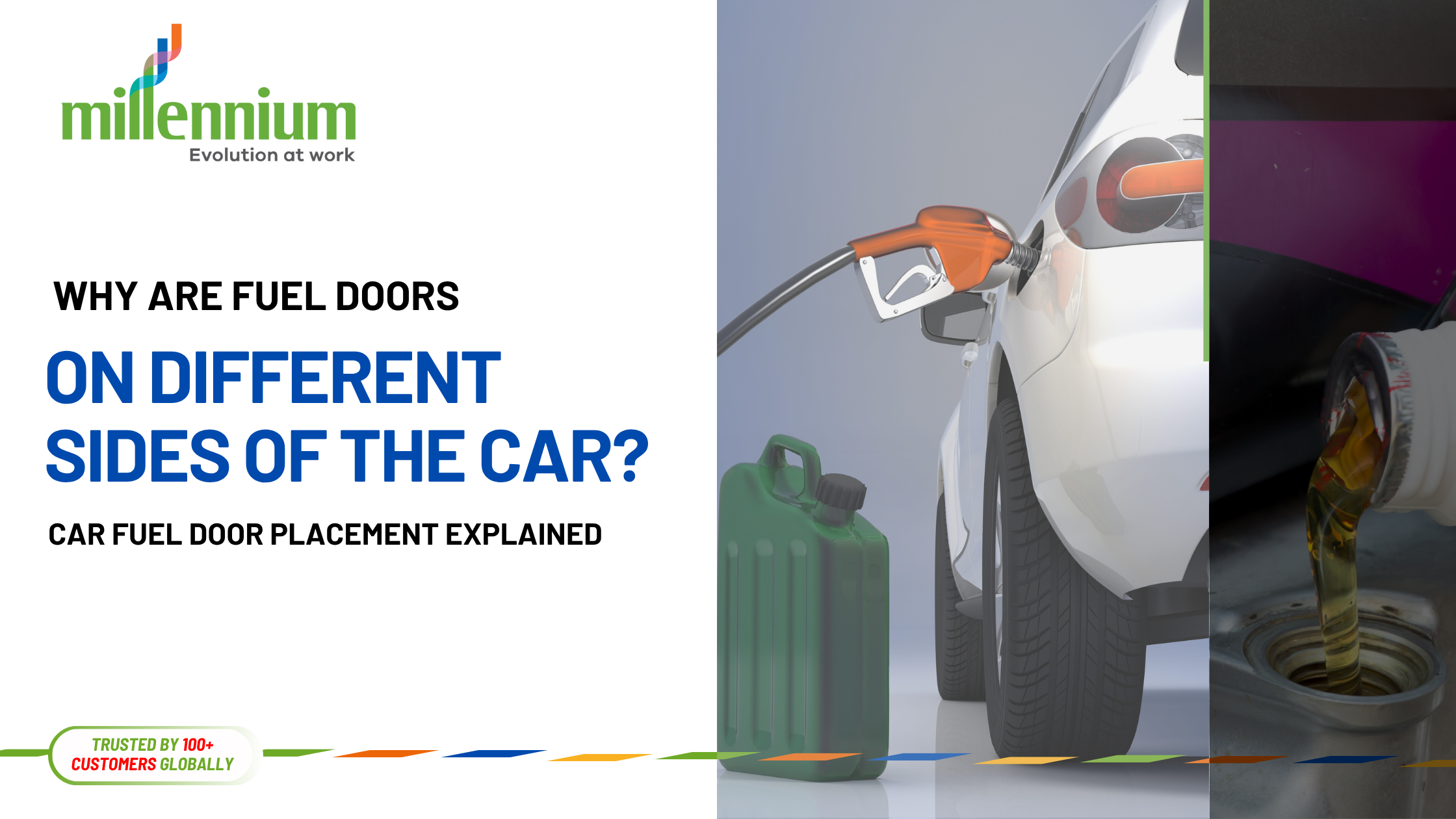Has it ever happened that you went to a petrol pump and saw that the fuel door was on the side where you had not thought? Then do not worry, you are not alone!
While this tiny panel on a vehicle seems like a minor detail, it often causes confusion. The fuel doors are something users do not think much about, but that is until they are stretching the hose across the car. But why is it not standardized?
This simple feature, the fuel door, has a surprisingly complex history rooted in design, engineering, and global driving norms. This blog explains it all.
The History Behind Fuel Door Placement
The Evolution of Fuel Door Placement in Cars
In the early days of cars, there was no such thing as a fuel door. At that time, fuel tanks were either mounted on the running boards or directly below the seats. As car designs became streamlined, the body became sleeker and more closed, and the fuel doors found a place outside for a more streamlined design.
During the 1950s and 1960s, fuel caps were hidden behind the taillight or below the number plate – this was a common trend. Gradually, manufacturers shifted the fuel cap to the side of the car so that filling became easier and safety also improved. But the interesting thing is that there was never a rule for one standard side. Each company decided according to its own design and convenience, which is why, even today, there are both left and right-side fuel doors.
These design choices have evolved into today’s modern fuel doors—where both aesthetics and functionality are taken into consideration.
Why Do Some Cars Have Fuel Doors on the Left and Others on the Right?
The Role of Car Manufacturing and Market Considerations
The placement of the car fuel doors displays the role of car manufacturing and market considerations. A major reason for the difference comes from regional manufacturing standards. In countries like the United States, where drivers sit on the left, manufacturers often place the fuel door left or right based on the majority of designs across models. In Europe or Japan, where right-hand drive is common, the logic flips. But there is no global rule. Automakers build for target markets using established production lines. Even then, variations occur within the same brand. For instance, Toyota may place it on the left in one model and right in another, simply based on the factory layout.
The Impact of Car Engine Placement
The impact of car engine placement matters to the fuel tank location. Cars with rear-mounted engines (like old VW Beetles) had front gas tanks changing fuel door positions. In modern designs, the fuel tank often sits under the rear seat or trunk floor. Where the fuel door ends up depends on the most direct routing for the filler pipe, minimizing bends and ensuring safety during crashes.
How Does Fuel Door Placement Affect Drivers?
Convenience and Safety Considerations
There are some practical reasons for different fuel door positions. For drivers, the side of the fuel door can mean the difference between quick refueling and awkward maneuvers. If you frequent busy stations, having the fuel door on the less common side might give you quicker access to a free pump.
From a safety standpoint, placing the fuel door away from traffic (passenger side in many countries) is sometimes deliberate. If you run out of gas and pull over, it’s safer to refuel away from the flow of vehicles.
Typically, fuel door placement affects driving habits and refueling. That is why, in recent years, modern fuel doors have also improved in design—flush with the body, resistant to tampering, and more aerodynamic. Some luxury vehicles even come with smart fuel doors that unlock automatically or integrate into digital security systems. A few even feature automatic fuel doors that open with a button press or hand gesture.
Frequently Asked Questions Regarding Fuel Door Placement: Why Are Fuel Doors on Different Sides of the Car? | An Explanation of Car Fuel Door Placement
Why are some fuel doors on the left and others on the right?
Does the side of the fuel door depend on where I drive (left-hand or right-hand side)?
Can fuel door placement impact my refuelling experience?
Why do some cars have hidden fuel doors?
Can I change the side of the fuel door if I’m buying a car?
Conclusion
In conclusion, the fuel door and its placement may apparently look like a design choice, however, looking beyond the apparent reveals that its placement is not only important based on driving conditions and rules but is also influenced by the driving habits of the citizens of a specific country and engineering concepts. Whether the fuel door is on the right or left side of the car, it reflects both the automotive design and functionality of the vehicle.
So, as technology develops over time, the fuel doors in cars are highly likely to become more intuitive, smarter, and safer. This will not only enhance the visual appeal of the future cars but will also promote the user experience.



